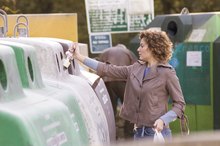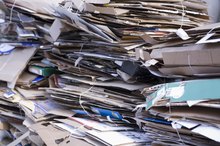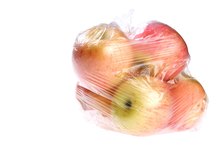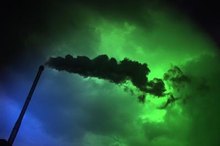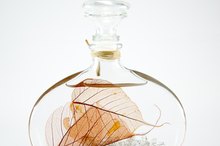The Advantages of Biodegradable Products
Biodegradable products are those that can be broken back down into their component parts over time by the action of biological organisms and processes. Paper and textile products are biodegradable, but traditional plastics made from petroleum bases are not. Consumer packaging and disposable eating products made of new biodegradable plastics from corn and other plant bases have numerous environmental and efficiency advantages over nonbiodegradable products.
Fuel Efficiency
The manufacturing of polylactic acid biodegradable plastic consumer products saves oil, writes Elizabeth Royte in Smithsonian Magazine. Biodegradable plastic production processes take 65 percent less energy than required to produce petroleum-based plastics, according to Food Service Warehouse, the restaurant supply industry leader in the U.S., making biodegradable plastics the top energy-efficient choice. Biodegradable products are made from renewable resources like corn, sugar cane and potato starch instead of oil: 200,000 barrels of oil a day are presently used in the United States alone in the manufacture of plastic packaging, and significant portions of this use could be eliminated by employing biodegradable plastic products.
Less Pollution
Examples of Waste Recycling
Learn More
Manufacturing biodegradable consumer products produces far less pollution, says Elizabeth Royte in Smithsonian Magazine. Because the products can break back down into nontoxic components, they don't cause dangerous chemical leachate that can poison water or offgassing that can pollute the air. Biodegradable plastic consumer products produce 68 percent less greenhouse gasses than petroleum-based plastic products, according to Food Service Warehouse.
There are some disadvantages. Food Service Warehouse points out that the corn and other plants used for biodegradable plastics production are usually genetically modified crops, and may create erosion; but Smithsonian Magazine quotes Eric Lombardi, president of the Grassroots Recycling Network, as responding to these disadvantages with the reminder that we should not discard the good in our pursuit of the perfect.
Compostability
Composting biodegradable plastics along with traditional biodegradable paper products and yard, food and agricultural wastes can turn this trash into rich humic material, which can improve water and nutrient retention and help grow healthier plants with less need for chemical fertilizers and pesticides, according to Ramani Narayan of the Michigan Biotechnology Institute and Michigan State University in a paper presented to the Third International Scientific Workshop on Biodegradable Plastics and Polymers. At present, biodegradable plastics can only be composted in commercial composting facilities which can maintain high composting temperatures, unlike paper and textile items, which can be composted in a backyard compost bin. But the number of such composting facilities is rising, according to Narayan, and municipalities and states around the country are increasing their recycling and composting goals regularly to reduce the quantity of waste being disposed of in expensive landfills. These factors, along with industry developments toward materials that break down more easily, will help increase the advantageous environmental effects of biodegradable products.
Related Articles
References
Writer Bio
A freelance writer since 1978 and attorney since 1981, Cindy Hill has won awards for articles on organic agriculture and wild foods, and has published widely in the areas of law, public policy, local foods and gardening. She holds a B.A. in political science from State University of New York and a Master of Environmental Law and a J.D. from Vermont Law School.
